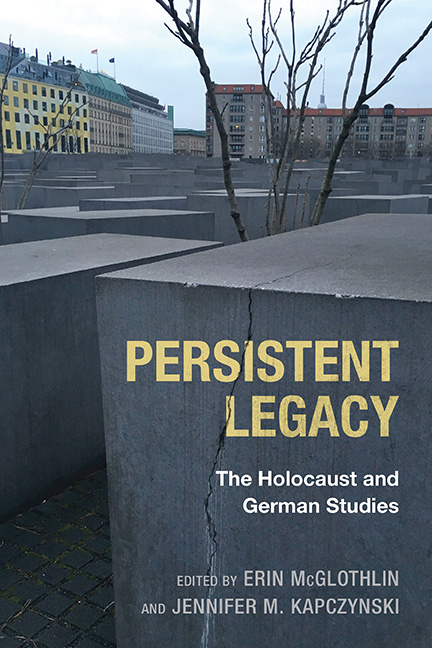106 results
Nocebo Hypothesis Cognitive Behavioural Therapy (NH-CBT) for non-epileptic seizures: a consecutive case series
-
- Journal:
- Behavioural and Cognitive Psychotherapy , First View
- Published online by Cambridge University Press:
- 29 November 2023, pp. 1-20
-
- Article
-
- You have access
- Open access
- HTML
- Export citation
Efficacy and safety of a 4-week course of repeated subcutaneous ketamine injections for treatment-resistant depression (KADS study): randomised double-blind active-controlled trial
-
- Journal:
- The British Journal of Psychiatry / Volume 223 / Issue 6 / December 2023
- Published online by Cambridge University Press:
- 14 July 2023, pp. 533-541
- Print publication:
- December 2023
-
- Article
-
- You have access
- Open access
- HTML
- Export citation
148 A Feasibility Study for the Implementation of a Hospital-based Violence Intervention Program in the Rural South
- Part of
-
- Journal:
- Journal of Clinical and Translational Science / Volume 7 / Issue s1 / April 2023
- Published online by Cambridge University Press:
- 24 April 2023, p. 45
-
- Article
-
- You have access
- Open access
- Export citation
Holocaust Tourism and Visual Mediation Sergei Loznitsa's Austerlitz
-
-
- Book:
- Nexus
- Published by:
- Boydell & Brewer
- Published online:
- 12 January 2024
- Print publication:
- 21 March 2023, pp 59-78
-
- Chapter
- Export citation
OP79 Incorporating Environmental Impacts Into Health Technology Assessment: An Examination Of Potential Approaches And Challenges
-
- Journal:
- International Journal of Technology Assessment in Health Care / Volume 38 / Issue S1 / December 2022
- Published online by Cambridge University Press:
- 23 December 2022, p. S29
-
- Article
-
- You have access
- Export citation
Developmental Origins of Health and Disease, resilience and social justice in the COVID era
- Part of
-
- Journal:
- Journal of Developmental Origins of Health and Disease / Volume 13 / Issue 4 / August 2022
- Published online by Cambridge University Press:
- 28 October 2021, pp. 413-416
-
- Article
-
- You have access
- HTML
- Export citation
Investigating the effect of COVID-19 dissemination on symptoms of anxiety and depression among university students
- Part of
-
- Journal:
- BJPsych Open / Volume 7 / Issue 2 / March 2021
- Published online by Cambridge University Press:
- 19 March 2021, e69
-
- Article
-
- You have access
- Open access
- HTML
- Export citation
Chapter 4 - Embodiment and Affect
- from Part I - After Humanism
-
-
- Book:
- After the Human
- Published online:
- 26 November 2020
- Print publication:
- 10 December 2020, pp 58-71
-
- Chapter
- Export citation
Utilizing Correlative Imaging Approaches with ToF-SIMS Expands Our Biochemical Interpretation Abilities Across Biological Kingdoms
-
- Journal:
- Microscopy and Microanalysis / Volume 26 / Issue S2 / August 2020
- Published online by Cambridge University Press:
- 30 July 2020, p. 2508
- Print publication:
- August 2020
-
- Article
-
- You have access
- Export citation
Total cost of surgical site infection in the two years following primary knee replacement surgery
-
- Journal:
- Infection Control & Hospital Epidemiology / Volume 41 / Issue 8 / August 2020
- Published online by Cambridge University Press:
- 28 May 2020, pp. 938-942
- Print publication:
- August 2020
-
- Article
- Export citation
13 - Affect and the Unsaid: Silences, Impasses, and Testimonies to Trauma
-
-
- Book:
- Qualitative Studies of Silence
- Published online:
- 30 June 2019
- Print publication:
- 18 July 2019, pp 236-253
-
- Chapter
- Export citation
Chapter 21 - Terrorism
- from Part III - Applications
-
-
- Book:
- Trauma and Literature
- Published online:
- 28 March 2018
- Print publication:
- 15 March 2018, pp 320-333
-
- Chapter
- Export citation
Aerial Photography and Videography for Detecting and Mapping Dicamba Injury Patterns
-
- Journal:
- Weed Technology / Volume 5 / Issue 4 / December 1991
- Published online by Cambridge University Press:
- 12 June 2017, pp. 700-706
-
- Article
- Export citation
Virginia Creeper (Parthenocissus quinquefolia) and Wild Grape (Vitis spp.) Control in Fraser Fir
-
- Journal:
- Weed Technology / Volume 23 / Issue 1 / March 2009
- Published online by Cambridge University Press:
- 20 January 2017, pp. 184-187
-
- Article
- Export citation
Bushkiller (Cayratia japonica) Growth in Interspecific and Intraspecific Competition
-
- Journal:
- Weed Science / Volume 58 / Issue 3 / September 2010
- Published online by Cambridge University Press:
- 20 January 2017, pp. 195-198
-
- Article
- Export citation
Evaluating Sensitivity of Five Aquatic Plants to a Novel Arylpicolinate Herbicide Utilizing an Organization for Economic Cooperation and Development Protocol
-
- Journal:
- Weed Science / Volume 64 / Issue 1 / March 2016
- Published online by Cambridge University Press:
- 20 January 2017, pp. 181-190
-
- Article
- Export citation
Perception, as you make it
-
- Journal:
- Behavioral and Brain Sciences / Volume 39 / 2016
- Published online by Cambridge University Press:
- 05 January 2017, e260
-
- Article
- Export citation
Contents
-
- Book:
- Persistent Legacy
- Published by:
- Boydell & Brewer
- Published online:
- 17 June 2021
- Print publication:
- 22 November 2016, pp v-vi
-
- Chapter
- Export citation

Persistent Legacy
- The Holocaust and German Studies
-
- Published by:
- Boydell & Brewer
- Published online:
- 17 June 2021
- Print publication:
- 22 November 2016



